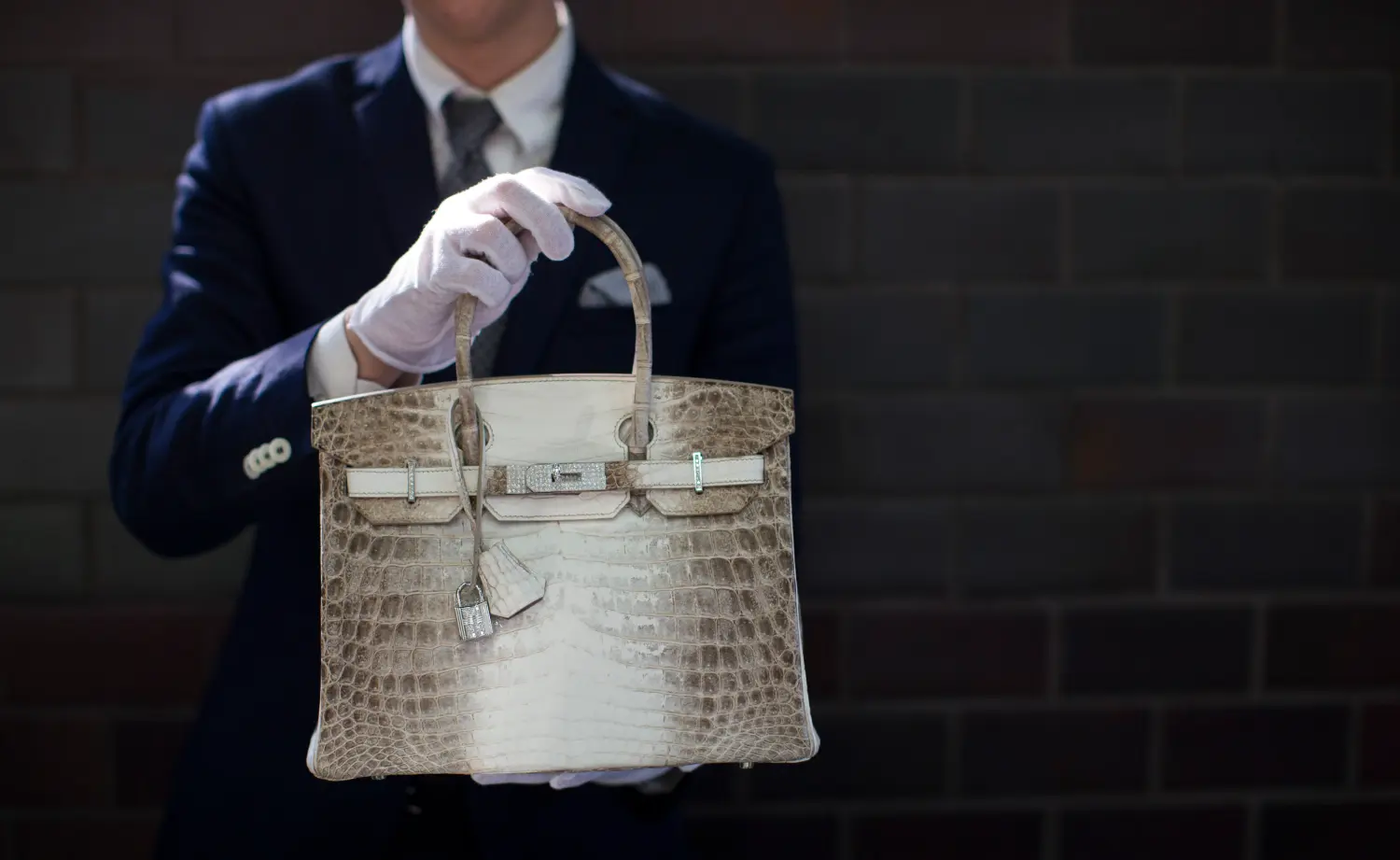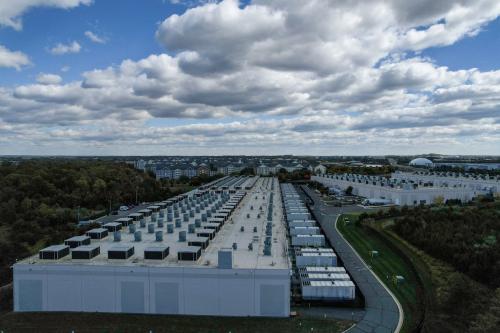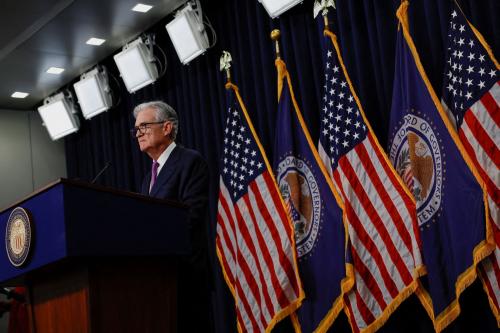The American upper middle class is separating, slowly but surely, from the rest of society. This separation is most obvious in terms of income—where the top fifth have been prospering while the majority lags behind. But the separation is not just economic. Gaps are growing on a whole range of dimensions, including family structure, education, lifestyle, and geography. Indeed, these dimensions of advantage appear to be clustering more tightly together, each thereby amplifying the effect of the other.
In a new series of Social Mobility Memos, we will examine the state of the American upper middle class: its composition, degree of separation from the majority, and perpetuation over time and across generations. Some may wonder about the moral purpose of such an exercise. After all, what does it matter if those at the top are flourishing? To be sure, there is a danger here of indulging in the economics of envy. Whether the separation is a problem is a question on which sensible people can disagree. The first task, however, is to get a sense of what’s going on.
“We are the 80 percent!” Not quite the same ring as “We are the 99 percent!”
For many, the most attractive class dividing line is the one between those at the very, very top and everybody else. It is true that the top 1 percent is pulling away very dramatically from the bottom 99 percent. But the top 1 percent is by definition a small group. It is not plausible to claim that the individual or family in the 95th or 99th percentile are in any way part of mainstream America, even if many of them think so: over a third of the demonstrators on the May Day ‘Occupy’ march in 2011 had annual earnings of more than $100,000.
For others, the most important division is at the other end of the spectrum: the poverty line. The poor have not fallen behind the middle class in recent decades. But they have not caught up either. There is a case to be made that whatever is happening towards the top of the distribution, the gap we should care most about is between families struggling to put food on the table and those with adequate, middling incomes.
This may be right. But two points are worth making. First, it is vitally important for policy analysts and policy makers to at least be clear about their primary concern. If reducing poverty is the goal, then it should be made explicit, rather than confusing it with reducing inequality—especially given that a good deal (though not all) of the motive force behind contemporary inequality is gap towards the top. Of course, both objectives can be pursued at the same time. But we need to be clear that they are distinct.
Second, we should be attentive to role of biography. Most journalists, scholars and policy wonks are members of the upper middle class. This undoubtedly influences their (OK, our) treatment of inequality. Those of us in the upper middle class typically find it more comfortable to examine the problems of inequality way up into the stratosphere of the super-rich, or towards the bottom of the pile among families in poverty or with low incomes. It is discomfiting to think that the inequality problem may be closer to home.
Defining the upper middle class
Class is a slippery concept, especially in a society that likes to think of itself as classless—or, more precisely, one in which everyone likes to think of themselves as middle class. In 2014, 85 percent of U.S. adults described themselves as ‘middle class’; a figure essentially unchanged since 1939, when a Gallup poll found that 88 percent described themselves in the same way.
Given that almost all Americans are middle class, the most important distinctions occur within that broad group. Only a tiny proportion—1 percent or 2 percent—is ever willing to label itself ‘upper class.’ But a significant minority adopts the ‘upper middle class’ description: 13 percent in the most recent poll, down from 19 percent captured in 2008:

These numbers are in fact quite similar to those generated by most sociologists, who have a leaning towards occupational status, and who typically define the upper middle class as comprising professionals and managers, around 15-20 percent of the working-age population.
Income provides a cleaner instrument with which to dissect the distribution, however, since it is easier to track over time and compare objectively. Income is also an example of what the philosopher Joseph Fishkin describes as an ‘instrumental good,’ bringing other benefits along with it.
Class is of course made up of a subtle, shifting blend of economic, social, education and attitudinal factors. But for my purposes, an income-based classification will provide a good starting point, not least because the trends in income inequality are fairly clear: the top fifth is pulling away from the rest of society.
In this first memo, I present some descriptive data for three groups:
- Upper middle class (top 20 percent by family income)
- Middle ‘half’ (the next two quintiles down, i.e. 40 percent)
- Bottom ‘half’ (the bottom two quintiles, i.e. 40 percent)
People tend to have higher incomes as they get older (at least until retirement). We therefore have to be careful not to confuse cohort effects with real trends. For this reason, wherever possible and appropriate, we have constructed our income quintiles for a narrow age range (mostly 35 to 40).
Upper middle class incomes: On the up
There is plenty of argument about the extent of inequality. But nobody questions the fact that in recent decades, incomes in the upper middle class are rising relative to the rest of the distribution. Families in the top quintile receive about half of overall income:

Upper middle class families have seen much stronger growth in real incomes in recent decades:

It is also true that there is growing inequality within the top quintile. Indeed, the higher up the distribution, the greater the rise in inequality. This is true even within the top 1 percent, where it is the top 0.1 percent or even 0.01 percent who are seeing the fastest lift-off in income.
“Where did you get your second degree?” The upper middle class and education
The upper middle class is pulling away economically. But class is not just about money. Education is an important ingredient, too. A higher level of education tends to be associated with greater occupational prestige and autonomy, as well as job quality and security. It is also worth remembering, even in this instrumental age, that education is a good in itself.
Given the strong association between education and earnings, it is hardly a surprise that the adults in the families in the top income quintile tend to have higher levels of education. A quarter of household heads have a postgraduate or professional qualification, a third have a four-year degree, and most of the rest have at least some college education:

In recent decades, the labor market returns to education have risen. Other things equal, this should tighten the relationship between family income status and education attainment: in other words, an upper middle class income and an upper middle class education will go together even more often.
A simple way to test this is to look at the correlation between being in the top income quintile and meeting certain education benchmarks. We correlate top quintile income status with three education measures: years of schooling, level of educational attainment, and being in the top quintile of the educational distribution. An advantage of the third is that it is a purely relative measure, and so is not influenced by rising overall education levels.

As expected, the association between education and a high family income has tightened over time. The trend is less strong for the years of schooling measure, almost certainly because of the significant increase in high school graduation rates. But it is clear that those with high education levels now have an even better chance of also having a high family income. (Education is such a big part of the upper middle class separation story, not least in terms of intergenerational transmission, that it will receive special attention in a future Memo in this series.) When different dimensions of advantage cluster together more tightly, the separation of the upper middle class becomes sharper: just as the clustering of disadvantages amplifies the effect of poverty.
Families, marriage, and social class
American society is divided along economic and educational lines, but also on the fault-line of the family. There is a much-discussed ‘marriage gap’between affluent, well-educated Americans and their less-advantaged peers. Families in the top income quintile are much more likely to feature a married couple than those lower down the distribution. Of course, the fact of being married helps to push up family income, since two adults have twice the earnings potential. Nonetheless, the gaps by income in family structure are striking. There are more never-married than married adults (aged 35 to 40) in the bottom 40 percent of the income distribution (37 percent v. 33 percent). In the top quintile, the picture is reversed: a large majority of household heads (83 percent) are married, while just 11 percent have never been married:

In itself, the relationship between upper middle class status and family structure may seem of little concern. Whether people choose to marry or not is a personal choice. But family structure, as a marker and predictor of family stability, makes a difference to the life chances of the next generation. To the extent that upper middle class Americans are able to form planned, stable, committed families, their children will benefit—and be more likely to retain their childhood class status when they become adults.
Voting and attitudes
There is a great deal of concern about the impact of the super-rich on American politics, and rightly so: read Darrell West’s book Billionaires for a balanced account. But while the Trumps and Kochs and Buffetts have the money to fund presidential campaigns, the upper middle class have plenty of political clout, too. They vote, they organize, they lobby, they complain: and their voices are heard. It is an established fact that those with higher incomes are more likely to vote. In 2012, three out of four top-income household heads voted, compared to just half of those towards the bottom (note these are not precisely the same cut-offs as the income quintiles):

The upper middle class are also more likely to believe in the American Dream that hard work gets you ahead, no doubt in part because they believe, rightly or wrongly, that the statement applies to themselves:

An upper middle class status is likely to be both a cause and consequence of a high degree of self- confidence and ability to navigate the complexities of the world. As the famous Chicago advice columnist Ann Landers once wrote, “Class is an aura of confidence that is being sure without being cocky. Class has nothing to do with money. Class never runs scared. It is self-discipline and self-knowledge.”
Survey data provides some support for the Landers ‘aura of confidence’ thesis. There are large differences in the extent to which individuals at different points on the income scale feel comfortable with the pace of change:

In fact, between the mid-1970s and the end of the 20th century, members of the upper middle class seem if anything to have become more relaxed about the changes in the world around them. (Note: we have not yet been able to access more recent data on this question.)
Conclusion
The writer and scholar Reihan Salam has developed some downbeat views about the upper middle class. Writing in Slate, he despairs that “though many of the upper-middle-class individuals I’ve come to know are good, decent people, I’ve come to the conclusion that upper-middle-class Americans threaten to destroy everything that is best in our country.”
Hyperbole, of course. But there is certainly cause for concern. Salam points to the successful rebellion against President Obama’s plans to curb 529 college savings plans, which essentially amount to a tax giveaway to the upper middle class. While the politics of the reform were badly bungled, it was indeed a reminder that the American upper middle class knows how to take care of itself. Efforts to increase redistribution, or loosen licensing laws, or free up housing markets, or reform school admissions can all run into the solid wall of rational, self-interested upper middle class resistance. This is when the separation of the upper middle class shifts from being a sociological curiosity to an economic and political problem.
In the long run, an even bigger threat might be posed by the perpetuation of upper middle class status over the generations. There is intergenerational ‘stickiness’ at the bottom of the income distribution; but there is at least as much at the other end, and some evidence that the U.S. shows particularly low rates of downward mobility from the top. When status becomes more strongly inherited, inequality hardens into stratification, open societies start to close up, and class distinctions sharpen.
The Brookings Institution is committed to quality, independence, and impact.
We are supported by a diverse array of funders. In line with our values and policies, each Brookings publication represents the sole views of its author(s).





